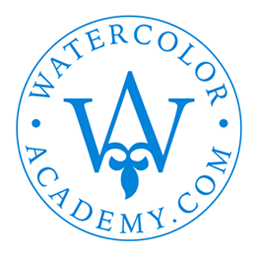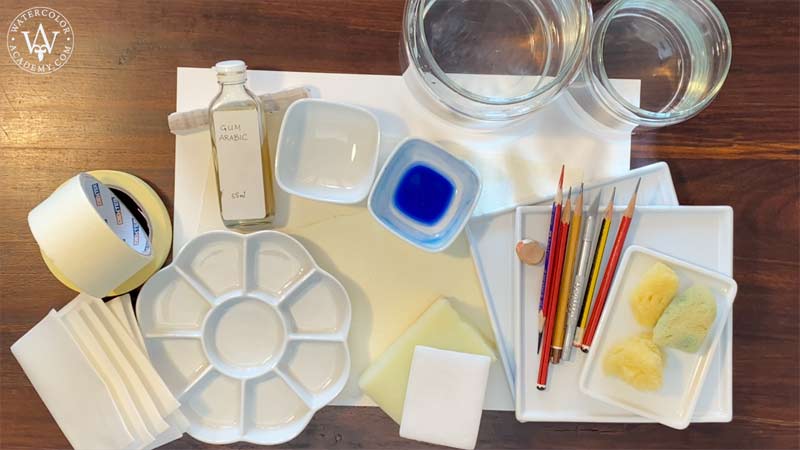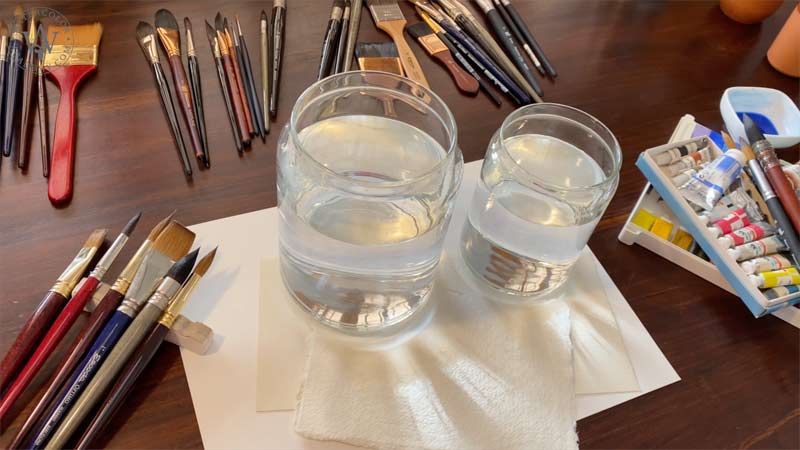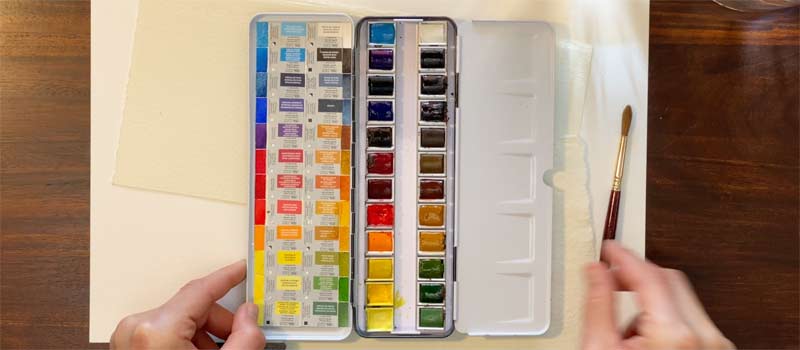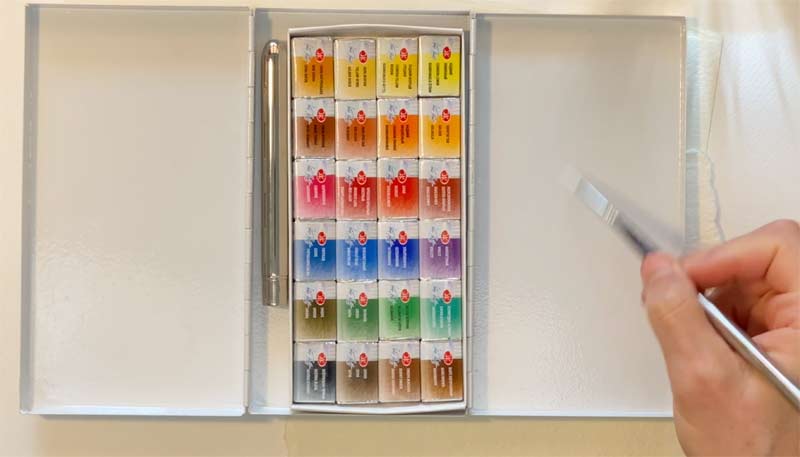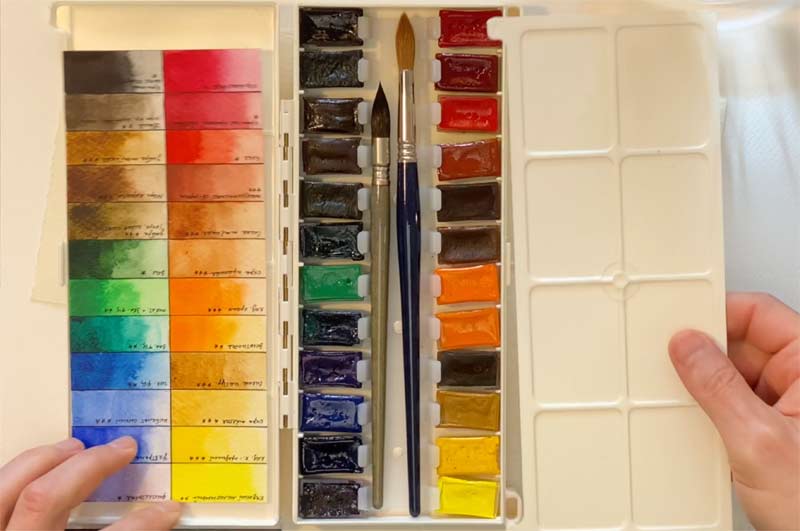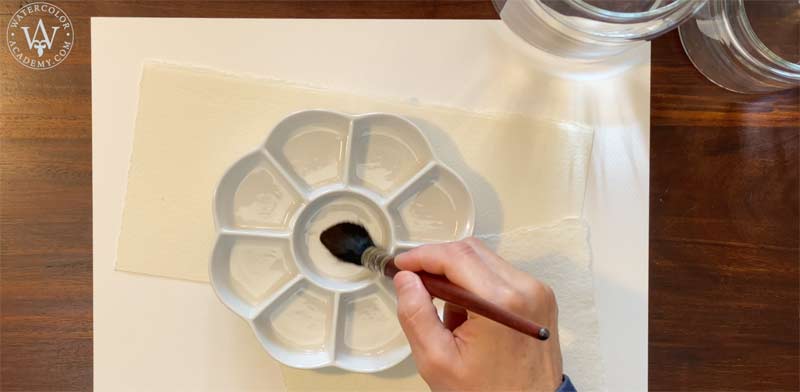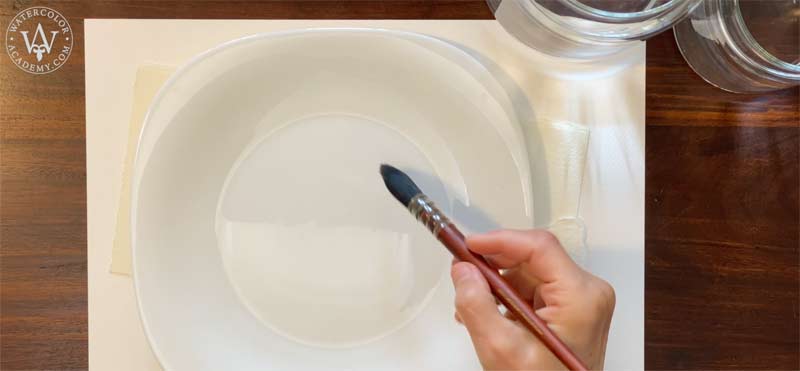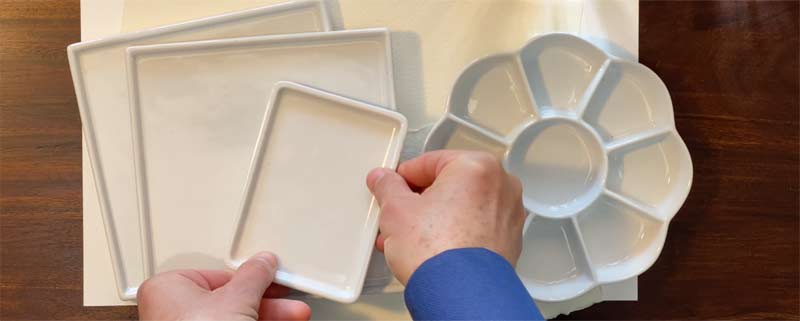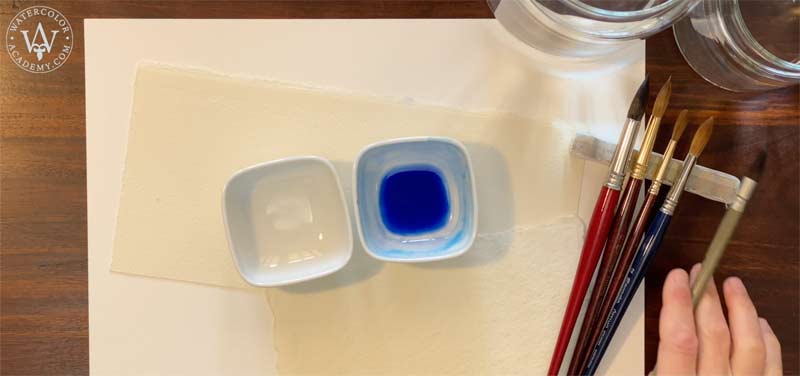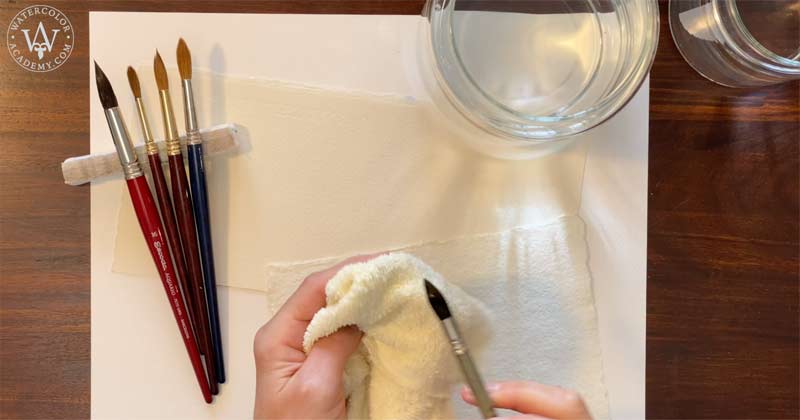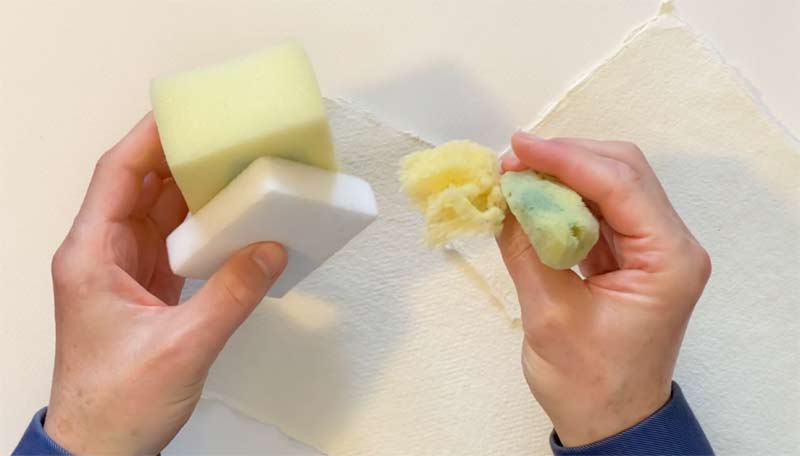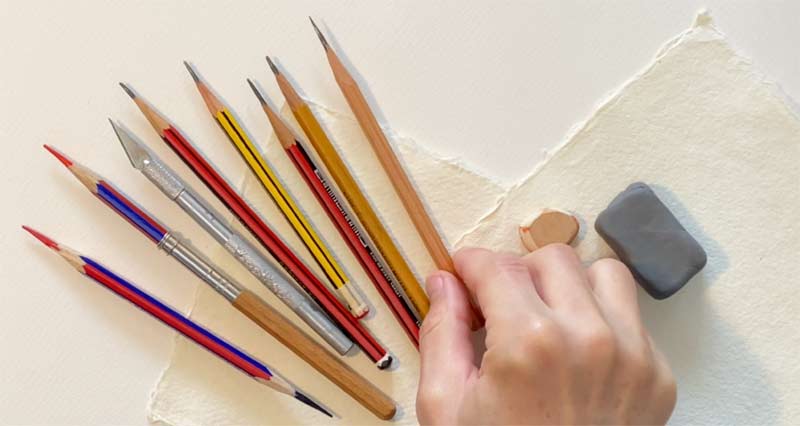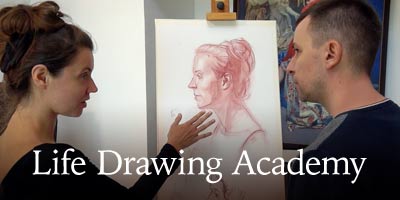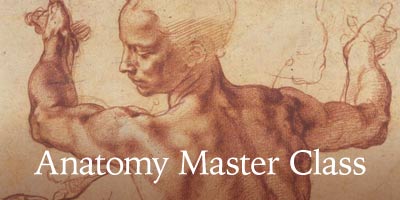Other Materials for Watercolor Painting
Article by Vladimir London, Watercolor Academy tutor
There are some other materials for watercolor painting that you will need to set up your working place
I will list them in no particular order, and mention which are necessary and which are optional.
The must-have item for watercolor painting is a water bucket. Although any water-holding container would do, ideally you need a big glass jar that holds above two liters (half a gallon) of water. In a glass jar, it is easier see how dirty water is and when changing it is required. The big size of the container will reduce the frequency of changes which will give you more time to concentrate on painting.
In the studio, where the space permits it, I use not one but two water buckets: one for washing dirty brushes and another for taking clean water for mixing paints.
When painting outdoors, a plastic container would be a better choice to a heavier and fragile glass.
A mixing palette is another must-have item.
A professional watercolor artist spends as much time preparing mixes of paints as actually painting, and so choosing a good palette is essential. It needs to be white to imitate the color of paper and durable.
Usually boxes with watercolor pans have one or several metal or plastic palettes integrated. This is especially handy for outdoor painting.
When working in a studio, it is better to use a separate bigger palette. The best choice is a white porcelain watercolor palette. They usually come with partitions for paints that are squeezed from tubes.
White porcelain plates or a butcher's tray can also be used as a cheaper and easier-to-find alternative.
Porcelain is ideal for mixing watercolor paints. Its surface reflects light the same as white paper does, so it is easier to see the color-tint as it would appear on paper while mixing it on the palette. Unlike a white plastic palette, porcelain won't be stained by dye paints and is easy to wash back to its original white state.
When talking about palettes, I'm often asked by Watercolor Academy students how many and what size they need. It depends. Get at least two. If you use plates as palettes you may find it handy to hold squeezed paints on one plate while mixing on another one. This way the puddles of mixes won't flow into the clean paint and taint it. Some artists use two palettes for mixing cold and warm colors separately. Regarding the size, it depends on the scale of artwork you make and number of paints you use. It is better to buy a bigger palette than you think you will need.
It is down to personal preference whether to wash palettes or not. I know artists who reuse old tints from artwork to artwork and never wash their palettes.
Some art teachers advise to use paper as a palette. This has only one advantage: colors are seen as they would look on paper. However, this is outweighed by many drawbacks, e.g. only small amounts of tint can be mixed, separated particles of soaked paper fibers might get into the mix, diluted paper sizing will get into the paint, part of the paint will soak into paper palette, and also, it is a false economy as eventually the cost of the paper used for mixing will exceed the cost of a hard palette. My advice is to use a proper palette to mix paints and a separate piece of paper to test mixed colors.
White porcelain saucers or coffee cups can also be used when a larger amount of pre-mixed paint needs to be prepared. Depending on the painting technique, you may need one to four saucers at a time.
Get some paper towels or blotting paper to absorb excess water or paint from watercolor paper and brushes. Butter muslin can also be used for the same purpose. Some artists use a clean cotton towel to absorb water from paper and another for wiping brushes.
Another item you may find handy is a sponge. It is used for wetting paper, absorbing water from paper and brushes, wiping-out and washing-out paints. Greek natural sponges are more expensive than synthetic ones but have an organic pattern that can be used for painting.
As we are talking about absorbing water and paint from brushes, I will also mention that apart from blotting paper, towels and sponges, an artist may use their fingers to control the amount of liquid on the brush. Squeezing water with fingers gives an accurate sensation of how wet the brush is.
Needless to say, sipping water from the brush is an absolute NO-NO. Young students sometimes get into this habit. Despite how "clean" a brush might appear, traces of the toxic paint can remain on it and will slowly do harm to a child's health.
Other inexpensive art materials that will be needed are pencils and erasers to make preliminary sketches, drawings, and under-drawings. A few graphite pencils – for example, HB and 2B plus a white rubber and some kneaded erasers will be sufficient.
In addition to graphite pencils, you could also purchase a couple of non-water-soluble colored pencils in red and light blue. These pencils are optional. They can be used for making or transferring drawings onto watercolor paper. This process is described in detail in the "Outlines and Contours Drawing" article.
To stretch watercolor paper for painting you will also need a roll of two-inch wide masking tape or gummed paper tape.
A scalpel or pencil knife is always handy to have for sharpening pencils and cutting paper.
For cutting paper, you might also get a cutting mat and a metal ruler.
A hair dryer is handy if you need a wet surface to dry faster. You can easily do without it though, because watercolor is a fast-drying medium anyway.
A palette knife in watercolor painting is not needed for mixing paints or applying mixes on paper. Nevertheless, if you have one it can be used for cutting sheets of watercolor paper off the block or for wiping lines of wet paint from paintings. It won't be used often, though, and is totally optional.
Another item that you don't need to have but might find handy is a mahlstick. It is a wooden stick or plank that can be used as a "bridge" over wet artwork to rest the hand with a brush while painting. It can also be used as a ruler to paint long straight lines.
To learn how to paint in watercolor, enroll now
Watercolor Academy Online Course
A self-study, self-paced course where you can learn how to paint in watercolor by watching video lessons and doing assignments
- Unlimited access to 80 watercolor painting video lessons
- Lifetime membership without deadlines
- Unlimited support from the Academy tutors
- Constructive critique of your artworks
- Member access to the Academy's Art community
- Place in the Academy's Students Gallery
- Exclusive members-only newsletter and bonuses
- Watercolor Academy Diploma of Excellence in your name
One-time payment - Lifetime membership
$297 USD
ENROLL NOW
Personal Tutoring online + Online Course
One-to-one, unlimited and custom-tailored to your skills and needs Personal Tutoring by the Watercolor Academy teachers
- Everything in Online Course, plus:
- Dedicated team of art tutors
- Assessment of your current level of art skills
- Personalized curriculum tailored to your skills and goals
- Up to 100 art tasks with by-task assessment
- Unlimited one-to-one personal coaching with detailed per-task instructions and feedback
- Artwork critiques and results-oriented guidance
One-time payment - Lifetime membership
$997 USD
ENROLL NOW
